
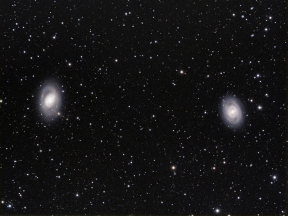
M95 and M9623 viewsTwo Spiral Galaxies in Leo, captured in the same frame
|
|
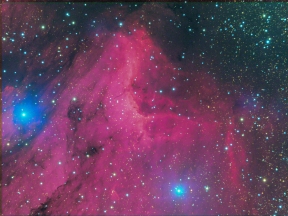
IC 5067 - The Pelican Nebula19 viewsAn emission nebula (H-II region) in the constellation Cygnus, associated with the North American Nebula (NGC 7000), but visually separated from it by a dark dust cloud. Supposedly has the shape of a pelican, though not very much in this image.
|
|
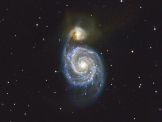
M51- The Whirlpool Galaxy18 viewsThere are actually two interacting galaxies here; the smaller companion is NGC 5195, and the two have collided in the past, causing all kinds of woe and grief. They are about 25 million light years away.
|
|
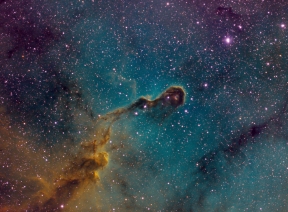
IC1396A - Elephant Trunk Nebula 17 viewsA narrowband (Hubble Palette) image of a dense cloud of gas and dust within a much larger region of ionized gas designated IC1396, illuminated and ionized by the massive bright star HD206267 at the upper right corner of the frame. I don't find that the shape of the nebula resembles an elephant's trunk, but rather, as Michelle Evans has suggested, a dragon named Verminthrax Pejorative from the movie Dragonslayer.
|
|
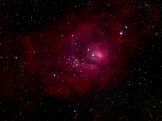
M8, The Lagoon Nebula in Sagittarius16 viewsAn emission nebula lying 4000-6000 years from Earth. Also designated NGC 6523. An HII star-forming region. Contains the open cluster NGC 6530.
|
|
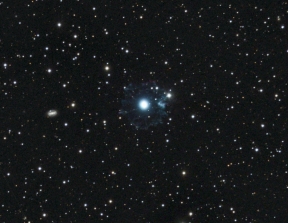
NGC 6543 - Cat's Eye Nebula16 viewsA structurally very complex planetary nebula about 3000 light-years from Earth in the constellation Draco. In large-telescope images it has the appearance of a cat's eye, but in my 5" refractor it appears simply as a bright blue star with a halo. The small spiral galaxy off to the left is probably NGC 6552.
|
|
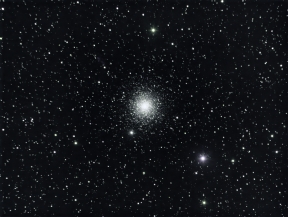
M15 - Globular cluster in Pegasus15 viewsContaining over 100,000 stars, 175 light-years in diameter, 33,600 light years from Earth. This is one of the oldest (12 billion years) and most densely packed globulars in the Milky Way.
|
|
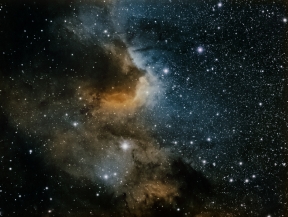
Sharpless 2-155 - The Cave Nebula15 viewsA narrowband (Hubble Palette) view of an emission nebula in Cepheus; part of an ionized HII region within a larger complex containing emission, reflection and dark nebulae. About 2400 light-years away, on the edge of the Cepheus molecular cloud.
|
|
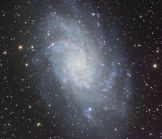
M33 - The Triangulum Galaxy14 viewsAbout 3 million light-years away, this is the third-largest member of the Local Group, which includes M31 and the Milky Way.
|
|
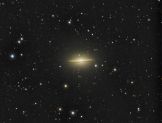
Messier 104 - The Sombrero Galaxy14 views28 million light-years away in the constellation Virgo, the Sombrero is one of the most spectacular of all galaxies.
|
|
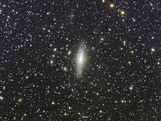
NGC 7331 - Spiral Galaxy in Pegasus13 viewsAbout 40 million light-years away; similar in size and structure to the Milky Way.
|
|
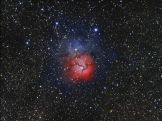
M20 - The Trifid Nebula13 viewsA combination of an open cluster of stars, an emission nebula (the lower, red portion), a reflection nebula (the upper, blue portion) and a dark nebula (which accounts for the gaps dividing the nebula into lobes). About 5000 light-years away in the constellation Sagittarius.
|
|
| 124 files on 11 page(s) |
1 |
 |
 |
 |
 |
 |
 |
 |
 |
|

|